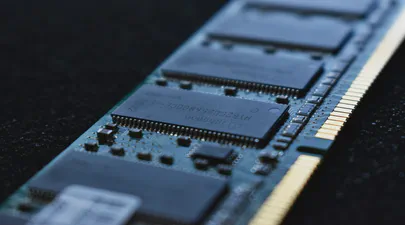
Unlock Your CXL Memory: How to Switch from NUMA (System-RAM) to Direct Access (DAX) Mode
- Steve Scargall
- Linux , System administration
- June 12, 2025
As a Linux System Administrator working with Compute Express Link (CXL) memory devices, you should be aware that as of Linux Kernel 6.3, Type 3 CXL.mem devices are now automatically brought online as memory-only NUMA nodes. While this can be beneficial for most situations, it might not be ideal if your application is designed to directly manage the CXL memory as a DAX (Direct Access) device using mmap().
This blog post will explain this behavior and provide a step-by-step guide on how to convert a CXL memory device from a memory-only NUMA node back to DAX mode, allowing applications to mmap the underlying /dev/daxX.Y device. We’ll also cover troubleshooting steps if the memory is actively in use by the kernel or other processes.
Understanding CXL.mem and NUMA Node Auto-Provisioning
In recent Linux kernel versions (from 6.3 onwards), CXL.mem devices are often automatically detected and configured as dedicated NUMA nodes. This means the kernel treats the CXL memory as another pool of memory, similar to traditional DRAM, which applications can allocate from via standard memory allocation mechanisms. The numactl -H output clearly illustrates this:
$ numactl -H
available: 3 nodes (0-2)
node 0 cpus: ...
node 0 size: 515751 MB
node 0 free: 475572 MB
node 1 cpus: ...
node 1 size: 515992 MB
node 1 free: 470018 MB
node 2 cpus:
node 2 size: 0 MB
node 2 free: 0 MB
In this example, node 2 is a memory-only NUMA node. Notice it has no CPUs associated with it (node 2 cpus: is empty) and its size and free are reported as 0 MB by numactl. This might seem counterintuitive, but it indicates that numactl isn’t reporting the CXL memory size in the same way it does for traditional DRAM, but rather its current state as a dedicated, memory-only NUMA node.
The lsmem command provides a more direct view of memory ranges and their states:
$ lsmem -o+NODE,ZONES
RANGE SIZE STATE REMOVABLE BLOCK NODE ZONES
0x0000000000000000-0x000000007fffffff 2G online yes 0 None 0
0x0000000100000000-0x000000807fffffff 510G online yes 2-256 Normal 0
0x0000063e80000000-0x000006be7fffffff 512G online yes 3197-3452 Normal 1
0x000006be80000000-0x000006de7fffffff 128G offline 3453-3516 2 Normal/Movable
Memory block size: 2G
Total online memory: 1T
Total offline memory: 128G
Here, we clearly see a 128GB memory range associated with NODE 2 that is currently offline. If this memory were online, it would be plausible for applications and the Kernel to allocate memory from it.
The cxl list command provides more detailed information about the CXL memory device:
$ cxl list
[
{
"memdevs":[
{
"memdev":"mem0",
"ram_size":137438953472,
"serial":12208648699093770240,
"numa_node":1,
"host":"0000:b4:00.0"
}
]
},
{
"regions":[
{
"region":"region9",
"resource":7415261036544,
"size":137438953472,
"type":"ram",
"interleave_ways":1,
"interleave_granularity":256,
"decode_state":"commit"
}
]
}
]
Here, we see memdev="mem0" with ram_size of 137438953472 bytes (approximately 128 GB). This memdev is part of region9 and is currently configured as type:"ram", indicating it’s being treated as system RAM. Crucially, the numa_node field for mem0 says 1, which might seem to contradict numactl showing node 2. This highlights that the CXL subsystem and NUMA view things slightly differently, but ultimately the CXL memory is accessible via NUMA.
The daxctl list command, on the other hand, shows the direct access (DAX) characteristics:
$ daxctl list
[
{
"chardev":"dax9.0",
"size":137438953472,
"target_node":2,
"align":2097152,
"mode":"system-ram"
}
]
This output confirms that a DAX character device, /dev/dax9.0, exists, and it has the same size as the CXL memory. The target_node is 2, which aligns with the numactl output for the memory-only NUMA node. The mode is system-ram, indicating that this DAX device is currently consumed by the kernel as system RAM, not directly available for mmap by user applications.
Why convert to DAX mode?
While automatic NUMA provisioning of CXL memory simplifies its integration, some applications are designed to directly interact with DAX devices. This often involves:
- Direct Memory Access (DMA): Applications might want to bypass the kernel’s memory management to gain fine-grained control over memory allocation and access patterns.
- Persistent Memory Awareness: If the CXL memory is also persistent memory, applications might leverage DAX mode to ensure data persistence across reboots.
- Custom Memory Allocation: Some high-performance applications implement their own memory allocators optimized for specific memory hierarchies or access patterns, directly utilizing DAX devices.
To enable these use cases, we need to convert the CXL memory from its system-ram mode back to a dax mode, making the /dev/daxX.Y character device directly accessible for open() and mmap() operations.
Step-by-Step Procedure to Convert to DAX Mode
The conversion process involves using the ndctl and cxl utilities.
Important Note: Modifying CXL device configurations can impact system stability if not done carefully. It is highly recommended to perform these steps on a test system first and ensure you understand the implications for your specific workload. This procedure will take the CXL memory offline temporarily. If pages are already allocated on the CXL memory (e.g., if numastat shows activity on node 2), the conversion process may encounter “Device or resource busy” errors. Rebooting the host typically resolves this problem by ensuring the memory is unallocated.
1. Identify the CXL Memory Device and Region:
From the cxl list output, identify the memdev and its corresponding region. In our example, the memdev is mem0 and the region is region9.
$ cxl list
...
"memdevs":[
{
"memdev":"mem0",
"numa_node":1,
...
}
]
},
{
"regions":[
{
"region":"region9",
"type":"ram",
...
}
]
}
...
From daxctl list, we confirm the chardev is dax9.0, which corresponds to region9.
$ daxctl list
[
{
"chardev":"dax9.0",
"size":137438953472,
"target_node":2,
"align":2097152,
"mode":"system-ram"
}
]
2. Handle Potentially Allocated Memory (If Necessary):
If you encounter “Device or resource busy” errors during the daxctl reconfigure-device step, it means the kernel or a process is actively using memory from the CXL NUMA node.
You can check numastat to see if there’s any activity on the CXL NUMA node (e.g., node2 in our example):
# numastat
node0 node1 node2
numa_hit 3283017 1671398 98
numa_miss 0 0 0
numa_foreign 0 0 0
interleave_hit 427 428 0
local_node 3235994 1584796 0
other_node 47023 86602 98
If numa_hit or other_node are non-zero for your CXL node, memory is in use.
To see if a specific process is using the memory:
sudo find /proc -maxdepth 2 -type f -regex '/proc/[0-9]+/numa_maps' -print | xargs grep "N2="
If this command finds no PIDs, it’s likely the Kernel itself is using the memory.
The most reliable workaround is to reboot the host. To prevent the kernel from automatically bringing the CXL memory online as system-ram at boot time, add memhp_default_state=offline to your kernel command line. This still configures the memory as system-ram but keeps it offline, allowing for a smooth conversion to devdax.
To add this to your kernel command line:
- For GRUB-based systems: Edit
/etc/default/grub, addmemhp_default_state=offlineto theGRUB_CMDLINE_LINUX_DEFAULTvariable, then runsudo update-gruband reboot.
Example cat /proc/cmdline after applying the option:
$ cat /proc/cmdline
BOOT_IMAGE=/vmlinuz-6.8.0-51-generic root=/dev/mapper/ubuntu--vg-ubuntu--lv ro memhp_default_state=offline
After rebooting with memhp_default_state=offline, lsmem should show the CXL memory range as offline from the start:
$ lsmem -o+ZONES,NODE
RANGE SIZE STATE REMOVABLE BLOCK ZONES NODE
0x0000000000000000-0x000000007fffffff 2G online yes 0 None 0
0x0000000100000000-0x000000807fffffff 510G online yes 2-256 Normal 0
0x0000008080000000-0x000000a07fffffff 128G offline 257-320 Normal/Movable 2
0x0000063e80000000-0x000006be7fffffff 512G online yes 3197-3452 Normal 1
Memory block size: 2G
Total online memory: 1T
Total offline memory: 128G
With the memory offline, you are now ready for the conversion.
3. Convert the Region to dax Mode using daxctl:
Instead of cxl region create-dax which works on a CXL region, when the DAX character device already exists and is in system-ram mode, we use daxctl reconfigure-device.
sudo daxctl reconfigure-device --mode devdax --force dax9.0
If you’ve followed the memhp_default_state=offline workaround, you might see output like:
dax0.0: all memory sections (64) already offline
[
{
"chardev":"dax0.0",
"size":137438953472,
"target_node":2,
"align":2097152,
"mode":"devdax"
}
]
reconfigured 1 device
The --force option is useful in case of minor inconsistencies.
4. Verify the Configuration:
Now, let’s verify the changes using daxctl list and numactl -H.
$ daxctl list
[
{
"chardev":"dax9.0",
"size":137438953472,
"target_node":-1, # Should be -1 or no target_node, indicating not bound to a NUMA node
"align":2097152,
"mode":"devdax" # Should now be "devdax"
}
]
The daxctl list output should now show mode:"devdax". The target_node might change to -1 or disappear, indicating it’s no longer managed as a NUMA node.
And for numactl -H:
$ numactl -H
available: 2 nodes (0-1)
node 0 cpus: ...
node 0 size: 515751 MB
node 0 free: 475572 MB
node 1 cpus: ...
node 1 size: 515992 MB
node 1 free: 470018 MB
node distances:
node 0 1
0: 10 21
1: 21 10
Notice that node 2 (the CXL memory NUMA node) is no longer listed under available nodes. This confirms that the CXL memory is no longer presented as a kernel-managed NUMA node.
Now, your application can open and mmap /dev/dax9.0 directly to interact with the CXL memory in DAX mode.
Conclusion
While recent kernel releases simplify CXL.mem integration by automatically creating memory-only NUMA nodes, understanding how to switch to DAX mode is crucial for applications requiring direct memory access. By following these steps with cxl and daxctl, and addressing potential issues with memory allocation at boot time using memhp_default_state=offline, you can reconfigure your CXL memory devices to expose them as /dev/daxX.Y character devices, enabling powerful new use cases for CXL technology. Always exercise caution and test thoroughly when making changes to memory device configurations.


